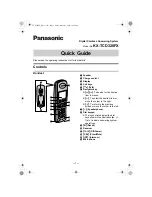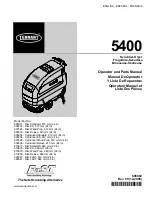
Methods to Reduce the Risks of CO Poisoning
• Air Exchange and CO Diffusion
• Application Considerations (Burnishing versus Stripping)
• Air Quality Monitoring
• Room Size and Time Estimations
• Maintenance of Equipment
• Safety Equipment Available
Air Exchange and CO Diffusion
The most reliable method to prevent CO Poisoning is to ensure all the CO produced is vented outside. With wood
stoves or gas heaters this is performed with ductwork that carries the exhaust and CO outside. Non-stationary
combustion type equipment must be used in such a way that CO is not allowed to rise to a harmful or dangerous level.
CO does not readily dissipate or mix with air on its own. Air currents can "stir" the CO and dilute the concentration or
ppm values by mixing it with the available air. When using equipment over a large area in a short time "stirring" occurs as
you walk, or to say it another way, your Effective Operating Zone is large. When activity is concentrated to a smaller area
as in a stripping application, the Effective Operating Zone is small, and "stirring" must be forced by the use of fans to
increase the Effective Operating Zone and reduce high concentrations of CO.
.
“Air" exchange rates (air exchange is defined as the exhausting of internal air to the external atmosphere), the size of
the Effective Operating Zone, amount of CO produced, level of human activity, and the duration of exposure are all
factors in the determination of the
production of carboxyhemoglobin and the amount of CO blood saturation.
Application considerations (Burnishing versus Stripping)
When using equipment over a large area in a short time, as in most burnishing applications, your Effective Operating
Zone is large. When activity is concentrated to a smaller area as in stripping applications, the Effective Operating Zone is
small and stirring or CO mixing MUST be forced by the use of fans to increase the Effective Operating Zone and reduce
high concentrations of CO.
Caution: air mixing in itself may not be sufficient to reduce CO to a safe level.
The Effective Operating Zone can be defined as the area covered in a given time.
MODEL 1
NO AIR EXCHANGE
I
NO AIR MIXNG (STRIP MODE)
Stripping differs from burnishing, and carries with it substantially more hazards, as stripping is a low movement
operation compared to burnishing (less floor space for the same time). As shown in Model 1, the CO concentrations rise
quicker as the "Effective Operating Zone" is a small area compared to the total building size.
5
Summary of Contents for 19315
Page 2: ......
Page 20: ...Propane High Speed Burnisher ...
Page 22: ...24 24 Propane High Speed Burnisher ...
Page 24: ...Propane High Speed Burnisher ...
Page 26: ...Propane High Speed Burnisher ...
Page 28: ...Propane High Speed Burnisher ...
Page 30: ...Propane High Speed Burnisher ...
Page 32: ...Propane High Speed Burnisher ...
Page 34: ...Propane High Speed Burnisher ...
Page 36: ...Propane High Speed Burnisher ...
Page 38: ...Propane High Speed Burnisher ...
Page 40: ...Propane High Speed Burnisher ...
Page 42: ...Propane High Speed Burnisher ...
Page 44: ...Propane High Speed Burnisher ...
Page 46: ......
Page 47: ......
Page 48: ......







































